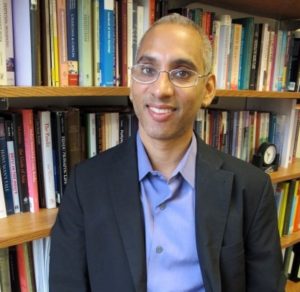
Bhashya, Samvada, and Sadhana: Commentary, Debate, Attainment and Other Takeaways from a Monastery in India
 My unpleasant memories of middle school English classes are made much worse when I recall how some teachers taught poetry and prose by picking “important” passages and pontificating about them. Learning to “read” poetry was essentially learning to listen to a lifeless lecture. When I first began teaching I too sometimes made this painful pedagogical error. Students glazed over and little was accomplished –certainly not significant or impactful learning.
My unpleasant memories of middle school English classes are made much worse when I recall how some teachers taught poetry and prose by picking “important” passages and pontificating about them. Learning to “read” poetry was essentially learning to listen to a lifeless lecture. When I first began teaching I too sometimes made this painful pedagogical error. Students glazed over and little was accomplished –certainly not significant or impactful learning.
Thankfully I remembered how my teachers in India taught –they taught by having their students read from primary sources, and having them offer a bhashya (commentary). The teacher sometimes added her/his own bhashya to clarify or to facilitate and provoke samvada (debate and discussion). In such religious and often monastic contexts reading the text out loud and commenting  upon it was inextricably linked to understanding, knowing, and embodying the text. Reading the text in these transformative ways, moreover, was a sadhana (a religious attainment). Virtuoso religious readers taught novices how to read a text, and, concurrently, how to practice what they had read. The transformative process was thus both a means to an end and an end in itself.
upon it was inextricably linked to understanding, knowing, and embodying the text. Reading the text in these transformative ways, moreover, was a sadhana (a religious attainment). Virtuoso religious readers taught novices how to read a text, and, concurrently, how to practice what they had read. The transformative process was thus both a means to an end and an end in itself.
I tried this method, to have students read passages out loud and make informative comments, in my classes in America and was surprised at how well it worked. I lectured less (or not at all) and the students taught themselves, and each other. They initiated samvada and some even felt “ownership” of passages that they read or had commented upon. We felt as if we are learning the text together and that we were being transformed together. It felt sometimes, like a group assignment, a sadhana.
T his method, however, is not without some problems. Students sometimes read ahead (as we did when we were in translation class) to figure out which passage s/he would have to read. This meant that sometimes students miss out on materials in anxious anticipation of their turns. Students who are not paying attention also lose their place in the text and we have to spend valuable class time orienting the disoriented. And, while shy students are forced to participate, other, more verbose and less inhibited, students give uninvited lifeless lectures.
his method, however, is not without some problems. Students sometimes read ahead (as we did when we were in translation class) to figure out which passage s/he would have to read. This meant that sometimes students miss out on materials in anxious anticipation of their turns. Students who are not paying attention also lose their place in the text and we have to spend valuable class time orienting the disoriented. And, while shy students are forced to participate, other, more verbose and less inhibited, students give uninvited lifeless lectures.
Successes and pitfalls aside, the greatest surprise that one often has in this collective and creative use of class time is that, in reading the text in this way, one becomes part of a parampara (lineage) of readers, each of whom have been transformed by the text and the process itself.
In teaching with this method, what sort of evaluations do you use in the class? Do you have students take exams and, if so, what content do you include on the exams?
I have students write papers that are close analyses of the primary sources. These analyses might address possible contradictions or may look at commentaries on ambiguous passages, concepts, etc.
I have students write papers which address possible contradictions or ambiguities in the primary source. This way I can evaluate what they learned in class and their research and reflective capacities.